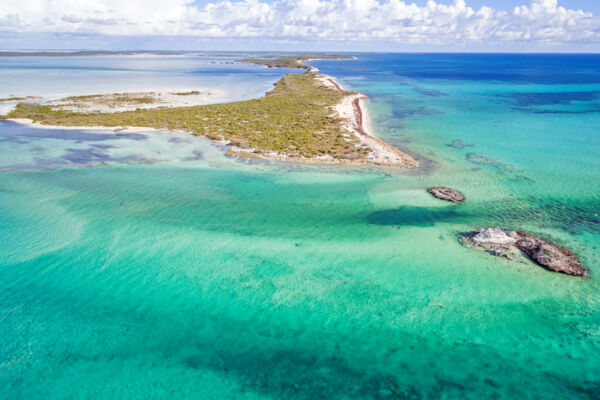Plandon Cay Turks and Caicos

Isolated and uninhabited, the scenic Plandon Cay is found off the northern peninsula of South Caicos. The total landmass of the island is about 50 acres (20 hectares), with the peaks of the cay reaching about 25 feet (8 m) in elevation.
Beautiful beaches, interspersed between low white cliffs, are located on the east and south coasts.
The sounds, channels, and shallows in the Plandon Cay region offer one of the finest landscapes in the Turks and Caicos.
Changes in water depth and suspended limestone particles in the water create an amazing range of blue, turquoise, and emerald colors.
Limestone Bluffs
Crumbling marine limestone bluffs make up the majority of the dry ground on Plandon Cay. Nearly all rock in the country is limestone, however, there is a vast difference in surface hardness throughout the islands.
Coastlines such as Mudjin Harbour and the Crossing Place Trail on Middle Caicos (and Chalk Sound on Providenciales) exhibit a harder grey patina layer, or weathered surface that often has intricate patterns. This hard outer shell typically is very thin and the rock under it is the bright white common to the country.
The much younger dunes found on some Turks and Caicos coasts exposed to trade winds, including the bluffs on Plandon Cay, are much softer, and in fact often blur the line between hard sand dunes and limestone.
Kayaking

The cays found between South Caicos and East Caicos hide exceptional kayaking spots. Teeming with bird and marine wildlife, these mangrove-lined waterways are sheltered and perfect for paddling.
The adjacent Bell Sound National Park and the creeks of McCartney Cay, Middle Creek Cay, and Hog Cay are truly spectacular.
Jerry Camp
Jerry Camp, the name of a small landing and natural boat launching point on the nearby western side of the northern peninsula of South Caicos, is the easiest place to gain access via small watercraft or kayak to Plandon Cay, Middle Creek Cay, and the incredible flats of the Bell Sound Nature Reserve.
As is a common trait seen throughout the islands, the same water accesses and coastal fishing spots have more often than not been recognized and utilized by various peoples throughout history, as the features of a great location tend to persist.
There’s evidence that the Jerry Camp landing was used by the indigenous Lucayan people, prior to the arrival of Europeans and Africans in the Turks and Caicos.
